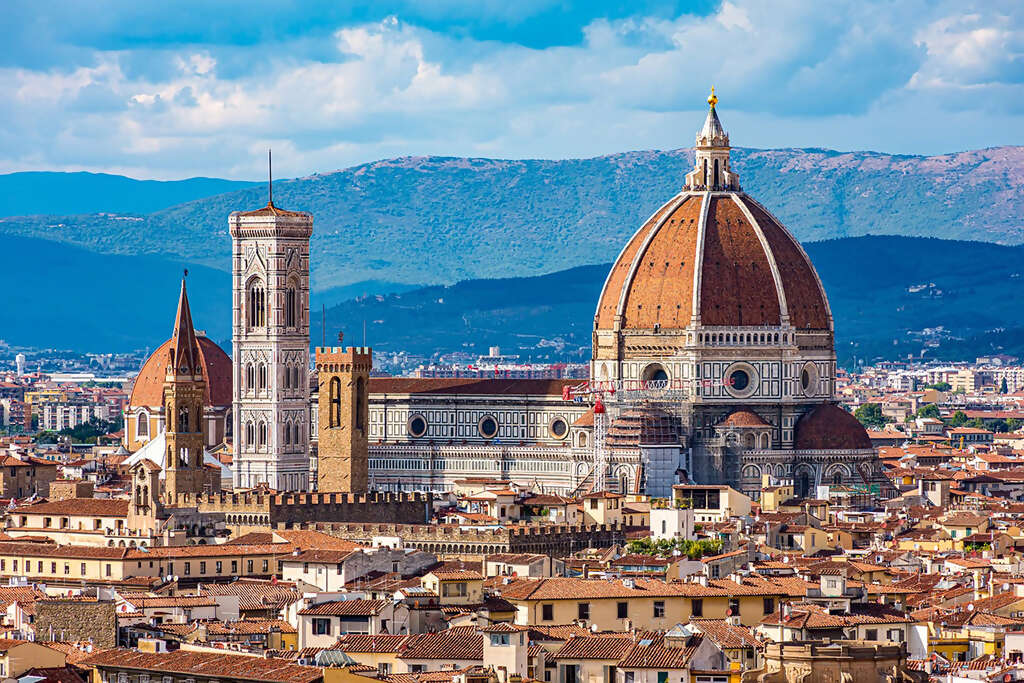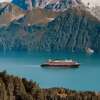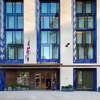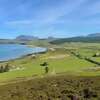
CENTURIES BEFORE DONATELLO, Michelangelo, Raphael, and Leonardo were crime-fighting turtles, Madonna lived in a material world, and Venus was a goddess on a mountaintop, they were pop culture icons in their own time. I was first acquainted with these artists and their subjects in university, through the pages of my art history books and lectures. Decades after I learned about them, I finally made it to Florence and Venice to pay homage in person.
Arriving at the Santa Maria Novella train station, it was a five-minute walk to the Mercure hotel, chosen for that reason. From there, it was a 15 to 20-minute walk to nearly all of the city’s attractions but unless you visit in winter, Florence isn’t a place to arrive without pre-purchased tickets to the top attractions. With thousands of incoming tour groups and hundreds more day-trippers, crowds are inevitable, and pre-planning saved the day.
I rose extra early to meet David – Michelangelo’s masterpiece that is the unmistakable Florentine emblem. Before leaving home, I had booked an 8:30 am (a bit early) admission to the Galleria dell’Academia di Firenze, and as I approached the museum and saw the long line of ticket purchasers already stretching down the street, I thanked myself for being disciplined.
Once inside, I found the colossus of a man standing in solitude under the glass-domed ceiling. Originally destined to perch atop Florence’s cathedral but deemed too perfect to be viewed from afar (and, in reality, too heavy to be lifted to the cathedral roof), David spent 369 years in front of the Palazzo Vecchio before being moved to the Academia, where he now stands, always ready for his close-up. I relished the space to admire him, while recalling the voice of my art history professor describing every detail, every curve.
In contrast to the small scale of the Academia, the Uffizi Gallery was a thorough workout. Wandering through the immense museum, I was spellbound by Botticelli’s and Titian’s graceful Venuses, the virginal Madonna portraits of Leonardo and Raphael, and many others that I recognized from my history books. At last exhausted and my mission fulfilled, I collapsed into a nearby café for my aperitivo, happy to have experienced these masters and their chefs d’oeuvres at last.

Re-energized, I strolled down to Ponte Vecchio, the city’s famous stone bridge that the Medici family – the medieval rulers of Florence – had built to reach the other side of the Arno River. The only bridge left intact during WWII, Ponte Vecchio is one of the most photographed sites in Florence, and its lanes are lined with jewellery shops.
The final stop of my art history trifecta was L’Opera di Santa Maria del Fiore, more commonly known as the Duomo. The baptistery, bell tower, and the imposing cathedral were a sight to behold, clad with pink and green marble. The interior of the cathedral was majestic, with the elaborate paintings in the dome vying for attention with the intricate marble floors. Inside the Opera del Duomo museum, I examined the expressive gestures and ‘owing drapery of Donatello’s sculptures, the detailed panels of Ghiberti’s gleaming bronze baptistery doors, and the models of Brunelleschi’s seemingly impossible dome. For a moment, memories of those art history lectures came flooding back, and I was filled with contentment and a sense of accomplishment.
I found immense pleasure in walking through the streets of Florence. Especially memorable was the scent of leather in the air as I passed market stalls selling garments and bags, jostling for attention with souvenir t-shirts and David statuettes. At Piazza della Signoria, the commanding Neptune Fountain and the replica of David (standing in his original spot) captured my attention. Walking west, I found the delightful Fontana Porcellino – a bronze boar sculpture whose nose is gleaming from visitors rubbing it for good luck. Across the Arno, I found another copy of David – this one bronze – standing atop the expansive Piazzale Michelangelo. Take a taxi there unless you’re up for an invigorating workout. All of Florence’s glory is visible from the square, with stunning views of the Duomo, Ponte Vecchio, and beyond.

After five busy days, I left the Tuscan city full of Florentine steak, wild boar ragu, and robust Chianti, ready for my next adventure. Taking the train, I arrived in Venice mid-morning and headed to St. Mark’s Square. At high tide, part of the massive square was flooded, and tourists were happily splashing barefoot in the ankle-deep water. Staring at the ornate exterior of St. Mark’s Basilica, I recalled my professor pointing out the mishmash of artistic styles that shaped the building. I spied Egyptian columns, Byzantine mosaics, Moorish arches, Gothic vaults, and spoils of war that had nothing to do with the Church. The adjacent Doge’s Palace stood equally grand, with its Gothic arches and Byzantine terraces.
A trip to Venice wouldn’t be complete without cruising the Grand Canal, and I took the slow route by hopping on the Vaporetto, the city’s waterbus system. Taking Line 1 that traversed the entire canal, I admired opulent palazzi and churches built in Baroque, Renaissance, and Gothic styles, passed under the four-centuries-old Rialto Bridge, and flower-filled restaurant patios. Boat traffic was heavy – after all, the Grand Canal is a watery highway – yet all vessels danced nimbly around each other as if in a perfectly choreographed ballet. A hairier experience was found on a crossing by Traghetto, the local gondola ferry that dashes across the canal. With Vaporettos, water taxis, and other watercraft coming full speed towards us in both directions, I felt like a frog crossing a highway but the brawny boatmen skillfully maneuvered our gondola (albeit with a lot of shouting) and delivered me safely to the other side.
My most cherished moment in Venice was the time spent wandering through its many fascinating neighbourhoods. Although my phone’s GPS guided me through the labyrinthine alleys, they say part of the fun is getting lost, so I put it away and followed my instincts. I stood on wrought-iron bridges peering over serenading gondoliers, window-shopped glittering Venetian masks, and photographed timeworn buildings, made especially charming by their weathered bricks and peeling stucco. The further I ventured from the touristy streets, the quieter it became, to a point where I was sharing the path with local residents, going about their daily lives.

Neighbouring lagoon islands were well worth a day trip. Taking the Vaporetto, I arrived in Murano to wander through its smaller but no less charming version of the Grand Canal. On my list was the Museo del Vetro, dedicated to the craft of glass-making, for which the island is renowned. Along with the detailed history and techniques of Murano glass, the museum showcased glass creations, from ornate chandeliers to delicate chalices, from the Middle Ages to the present day. Not surprisingly, Murano’s streets were lined with glass shops, with several studios offering live glass-blowing demonstrations.
My next stop was Burano, where life was substantially quieter. Here, brightly-painted buildings made for colourful photo ops during a peaceful stroll. I was told that these houses were painted in vibrant hues to aid fishermen in finding their homes when returning in the thick fog. Besides –shing, lace making is another traditional craft and today, you can both enjoy a fresh seafood meal and pick up exquisite lace souvenirs to take home, at the same time.
As much as Florence and Venice are blessed by their wealth of historical treasures, they are simultaneously burdened by over-tourism. I did what I could by staying longer, buying local, and being respectful, but it remains a herculean task to balance tourism while protecting the infrastructure. I’m hopeful a solution will soon arise, because the Old Masters and their timeless creations never stop inspiring future generations of art lovers to come.
Written by Ming Tappin
Featured
Popular Articles & Videos
- Video: Meet the Wine Maker in the 'Tuscany of Austria' on the Danube
- You Need This Suitcase For Your Next Trip to Wine Country
- 3 New, Impossibly Picturesque Boutique Hotels That Make it Easy to Dream About Your Next Trip to Europe
- Cruising with History on Sea Cloud
- Video: Alaska Wildlife Encounters You Can't Miss












